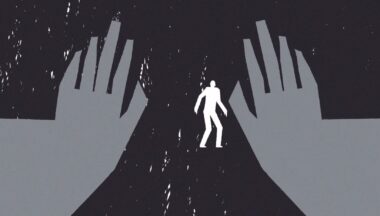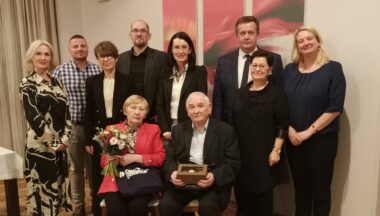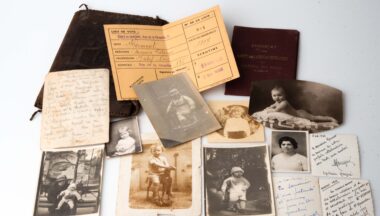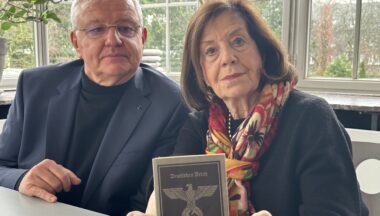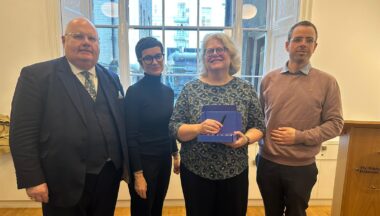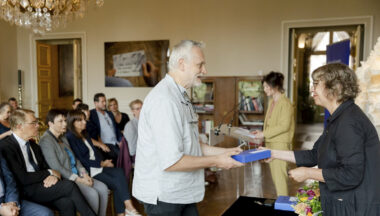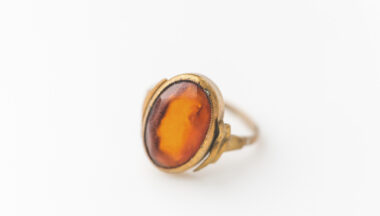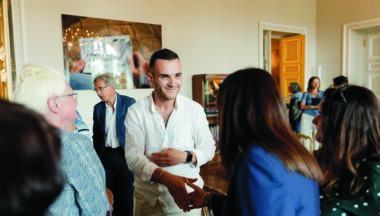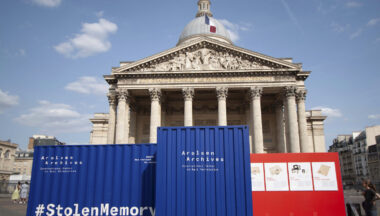Poland: Prisoner’s ring returned to her granddaughter
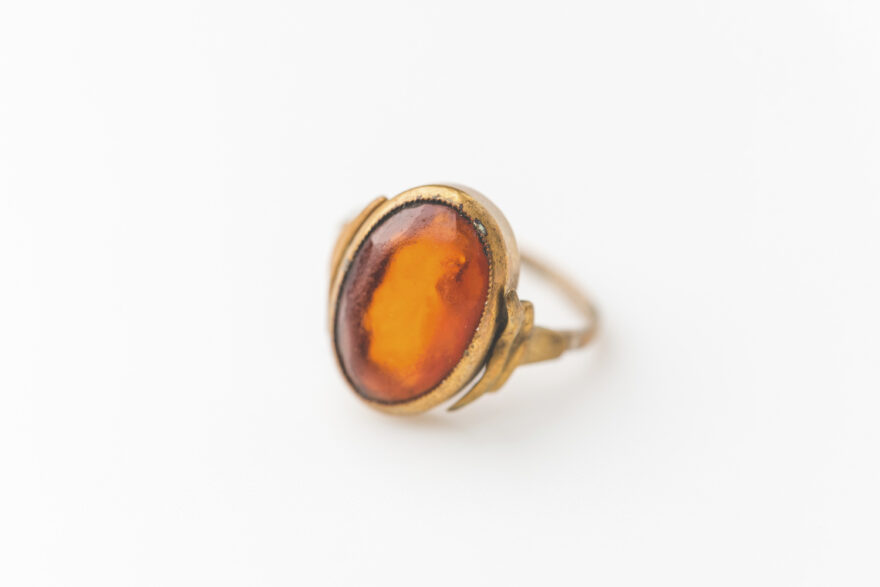
On September 22, a piece of jewelry belonging to Karolina Sitek née Barcik was handed over to her granddaughter Bozena Krupa at Zakopane City Hall. The ring had been taken from her grandmother in Ravensbrück concentration camp . Arolsen Archives volunteer Elżbieta Koczar from the Zory Municipal Cultural Center managed to trace Karolina’s granddaughter.
Finding Karolina Sitek’s descendants was not easy, despite the fact that documents held by the Arolsen Archives contain the following basic information about her: Karolina Sitek was born to Jan and Justyna Barcik on May 20, 1907, in Zakopane. She was a seamstress by profession. On April 12, 1944, together with a group of other women, she was deported to the Ravensbrück concentration camp, where she received the number 34503 and was assigned to the category of political prisoners. On August 31, 1944, she was transferred to Neuengamme concentration camp (prisoner number 4570m). Karolina survived the war. She was taken to Sweden in the context of the “White Buses” operation organized by Count Folke Bernadotte and the Swedish Red Cross, and she received assistance there. On October 11, 1945, Karolina Sitek returned to Poland.
A message left on a grave
In 2022, the Tracing Team at the Arolsen Archives managed to find her grave at the Holy Family Cemetery in Zakopane. Unfortunately, although the Tracing Team sent an e-mail to the cemetery’s management at the time, informing them that they were trying to trace Karolina’s relatives, their e-mail went unanswered.
When the #StolenMemory traveling exhibition visited Zory, Poland, Elżbieta Koczar from the Municipal Cultural Center took the opportunity to revisit Karolina Sitek’s case. She was an experienced volunteer and had already worked with the #StolenMemory campaign and had found the families of two other prisoners – Wilhelm Winkler and Jan Gaszczyk. As the archival documents indicate that Karolina Sitek and her husband lived in Katowice before the war, Elżbieta focused her search on Silesia.
When the search in Silesia did not yield any results, she traveled to Zakopane, the town where Karolina Sitek was born and buried. She left a piece of paper on Karolina’s grave, with the message that some of her belongings had been preserved from World War II. Hoping that somebody would call her one day, Elżbieta included her phone number. Two months later, the phone rang.
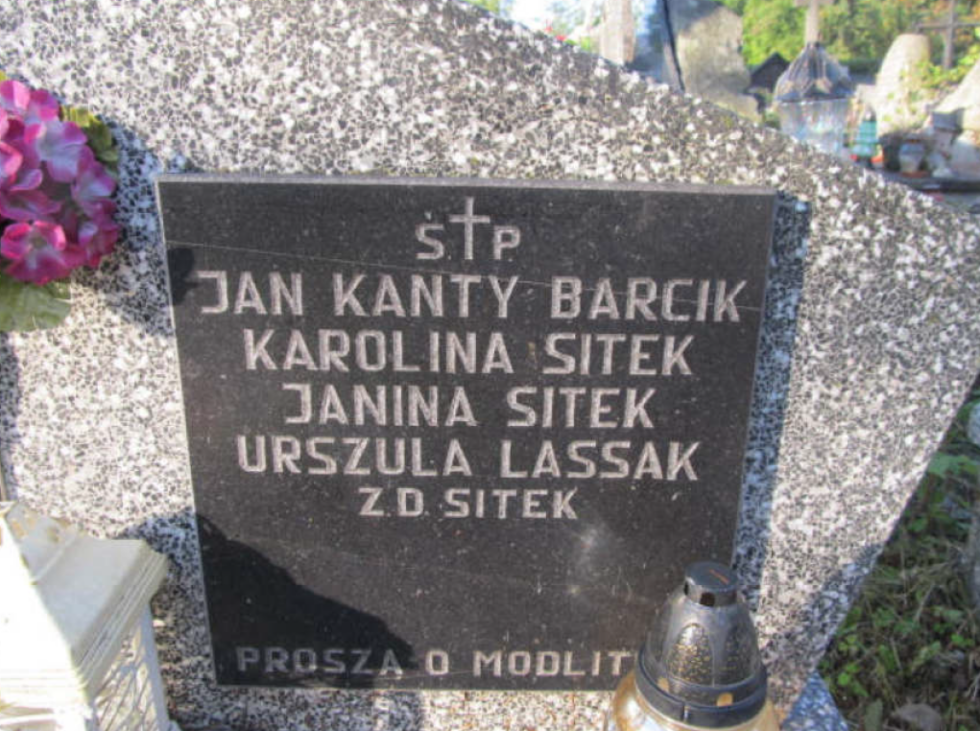
The most precious thing of all
It turned out that the message had been found by Bozena Krupa, who was visiting the grave where her mother and grandmother are buried. At first, she thought the note might be some sort of scam. Despite her misgivings, however, she decided to call the number and find out what it was all about.
When Elzbieta Koczar told her about the ring the Nazis had taken from Karolina Sitek at the Ravensbrück concentration camp and about all the information contained in the documents preserved in the Arolsen Archives, silence fell at the other end of the line. Karolina’s granddaughter had not expected there to be any mementoes of her grandmother left. She was very moved by this new information, and she agreed to a meeting in order to receive this last memento of her grandmother in person.
At the ceremony held on September 22 to mark the return of the ring, Zakopane’s Mayor Leszek Dorula, who happens to be a cousin of Bożena Krupa, recounted the story of the Barcik family in detail.
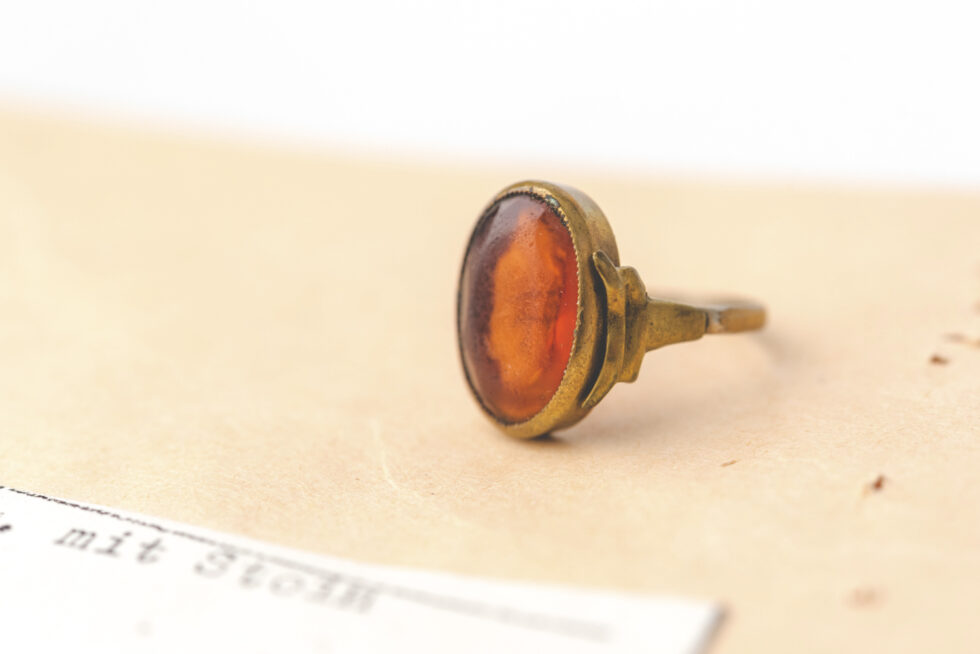
“My grandmother's ring is the most precious thing I have. Apart from my family." Bozena Krupa
The search for lost relatives
Elzbieta Koczar finds it easy to relate to sentiments like these. She has been working with the Arolsen Archives as a volunteer for some time now, helping to search for the relatives of victims of Nazi persecution. Speaking at the ceremony, she said, “Families are like trees. Some trees provide shelter and shade, others have green leaves that we admire with delight, unaware that disease is consuming them from within. We all know that untended trees lose their beauty. And some trees get damaged. That’s what my family’s tree is like.” Elzbieta Koczar began researching her own family history a few years ago, but her efforts do not always yield results. Describing the motivation behind her work as a volunteer for #StolenMemory, she explains, “Every time I managed to help someone else, I felt as if I had just found a part of my own story.”

